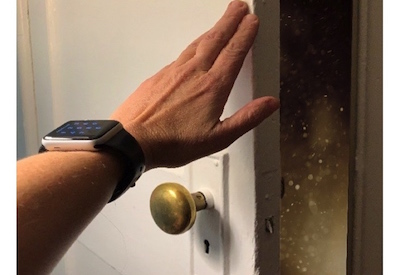Guide to the Canadian Electrical Code, Part I — Instalment 32

Jan 8, 2018
By William (Bill) Burr
The 24th Edition of the CEC, Part I, will be available in January 2018. This discussion considers amendments to this section that are contained in the new edition.
In this article: Section 64 — Renewable Energy Systems. Rule 64-000 notes that this is a supplementary or amendatory section of the code and applies to the installation of stand-alone and interactive renewable energy systems, except where they operate as Class 2 circuits with the voltage and current limited as per Rule 16-200(1)(a) and (b).
Rule 64- 002 contains definitions of special terminology used in this section. It is important to understand these terms when reviewing the code rules of this section. Appendix B contains many diagrams and explanations to help in understanding this terminology. For additional information, see CAN/CSA-C22.2 No. 257.
The section is divided into nine parts: General, Inverters, Solar photovoltaic systems, Small wind systems, Large wind systems, Micro-hydropower systems, Hydrokinetic power systems, Stationary fuel cell systems, and Storage batteries.
General
The General requirements, Rules 64-050 to 64-078, apply to all renewable energy systems installations and include:
- permission to supply a building or structure in addition to another supply system
- requirement for conductors to be separated from other systems as per Rules 12-904(2) and 12-3030
- determining ampacity of common return conductor for a system with multiple supply circuit voltages
- installation of bipolar systems, including:
- o physical separation of monopoles where the sum of the monopole voltages exceeds the rating of the conductors or equipment
- o location of disconnects
- o routing of insulated conductors
- o warning marking against disconnection of any grounded conductor
- installation of overcurrent devices, including selection, marking, location and connection, as per Section 26
- installation of disconnecting means, including provision for, selection, marking, warning labels, location, connection, as per Rules 14-402, 14-414, 14-700, and 84-024, capability of locking in the open position, and specific requirements for combiners
- wiring methods to be contained in metallic raceways, metal enclosures, or metal armoured or sheathed cables, from the entrance to the building to the first readily accessible disconnecting means, except as required by Rule 64-210
- requirements for system grounding, including:
- o AC systems in accordance with Rule 10-106(1)
- o one conductor of a 2-wire system with a system voltage of 50 V or greater for DC supply circuits
- o the reference (centre tap) conductor of a bipolar DC supply system
- o a ground fault protection device or system that detects, indicates and interrupts a ground fault by disconnecting the DC circuit, the invertor or the charge controller, supplying the faulted circuit
- o location and connection of grounding point on the renewable energy supply circuit
- o connection of the grounding conductor of a DC supply system, equipped with a ground fault protection device, to the grounding electrode via the ground fault protection device, but not externally duplicated if internal to the equipment
- requirements for permitting ungrounded renewable energy power systems, including:
- o providing overcurrent protection for all source and supply circuit conductors
- o conspicuous, legible, and permanent warning labelling at each junction box and a suitable disconnecting means where the ungrounded circuits can be exposed during service
- o suitability of inverters or charge controllers for this use
- o provision of a ground fault protection device or system that detects, indicates and interrupts, a ground fault by disconnecting the DC circuit, the inverter, or the charge controller supplying the faulted circuit, or
- o use with ungrounded battery systems that comply with Rule 64-800
- requirements for installation of grounding electrodes and conductors, including:
- o connection of AC and DC grounding conductors to a single electrode, with separate grounding conductors sized as required by Rules 10-810 and 10-812
- o connection of the DC grounding conductor between the identified DC grounding point and a separate DC electrode, and by bonding the DC grounding electrode to the AC grounding electrode as per Rule 10-702(b), or
- o installing a combined DC grounding conductor and AC equipment bonding conductor as per Rule 10-806 and sized as per Rules 10-810 or 10-814. (choose the larger) (diagrams in Appendix B outline these methods)
- requiring a method of maintaining the continuity of the bonding connection between the grounding conductor and conductive surfaces of supply equipment, during disconnection or removal of equipment
- providing marking, at the disconnecting means of all interactive points of interconnection with other sources, with the maximum AC output operating voltage and current
- providing conspicuous, legible, and permanent warning notices, directories, and diagrams
- o on a building or structure to mark that it contains a stand alone electrical power system, and the location of the disconnecting means
- o on or near each disconnecting means, indicating the location of all other service boxes supplying power to the building, in accordance with Rule 6-102(3), where the building or structure contains both a utility supply service and a renewable energy system and it is not practical to group the disconnecting means as per Rule 6-102(2)
- o at each service equipment location and the supply authority meter location
- o at the location of the service disconnecting means of the premises that contains a renewable energy power system that stores electrical energy
- requiring that switching equipment controlling a renewable energy system, not intended to be interconnected with a supply authority, be constructed or arranged to render it impossible to switch on one source before the other has been disconnected
- requiring that an interactive renewable energy system be provided with a means of detecting when the electrical production and distribution network has de-energized, and prevent the feeding of renewable energy into the other supply system, until normal voltage and frequency has been restored (the renewable energy system may continue to operate as a stand-alone system supplying loads that have been disconnected from the other supply system)
(Note: Appendix B has additional information on the general requirements rules.)
Inverters
Rules 64-100 to 64-112 apply to inverters and include requirements for
- determining maximum circuit loading
- rating, size of conductors, overcurrent protection, and use of stand-alone systems
- mounting interactive inverters on roofs or other exterior areas that are not readily accessible
- connection to other sources
- determining the ampacity of the neutral conductor based on the rating and the load of the inverter and the use of the conductor
- use of inverters in interactive systems to connect to three-phase systems in accordance with Rules 84-008 and 84-018
- connection of interactive inverters or power conditioning units to a supply authority system in accordance with Section 84
Solar photovoltaic systems
Rules 64-200 to 64-222 apply to solar photovoltaic systems and include requirements for
- providing marking, at the disconnecting means, specifying
- o the rated operating current and voltage
- o the maximum photovoltaic source circuit voltage
- o the rated short-circuit current
- o the location of the rapid shutdown (at the supply authority meter location or at the consumer’s service equipment location)
- determining the maximum rated open-circuit voltage and voltage ratings of cables, disconnects, overcurrent protection and other equipment
- limiting voltage drop
- determining ampere rating
- use of photovoltaic module application class A, B, or C
- wiring methods
- conductor marking and colour coding
- determining requirement and rating of overcurrent protection
- providing arc-fault circuit protection
- provision and location of a rapid system shutdown (including labelling as noted above)
- use and rating of attachment plugs and similar devices
- methods of bonding to ground non-current carrying metal parts of photovoltaic modules
Small wind systems
Rules 64-300 to 64-320 apply to small wind systems and include requirements for
- providing marking, at the disconnecting means of the wind turbine output circuit, specifying
- o overcurrent protection values
- o short-circuit current rating
- o a system description, including the type of generator
- o rated output current
- o rated output voltage
- o instructions for disabling the turbine
- permitted maximum output voltage, and accessibility only to qualified personnel
- determining current and temperature rating of supply conductors
- wiring methods
- provision, rating and location of overcurrent protection for apparatus, power transformers, and conductors
- installation, rating, type and location of disconnecting means for circuits and equipment, (and in accordance with Rule 84-024)
- methods of bonding to ground, non-current carrying metal parts of towers, turbine nacelles, other metallic equipment, guy wires, conductor enclosures and metal buildings, in accordance with Section 10
- protection of maintenance receptacles with a GFCI, Class A type
- installation of lightning protection grounding conductors and electrodes, in accordance with Rules 10-706 and 10-702
- use of diversion load controllers
- installation and location of surge protective devices
Large wind systems
Rules 64-400 to 64-414 apply to large wind systems and include requirements for
- providing marking at the base of the tower (entrance) of the wind turbine specifying
- o overcurrent protection values
- o short-circuit current-interrupting capacity rating for protective devices
- o a system description, including the type of generator, rated output current, rated output voltage,
- o a warning notice and diagram in accordance with Rule 84-030, and electrical shock and arc flash labels on the wind turbine access door
- determining current and temperature rating of supply conductors
- provision, rating and location of overcurrent protection for apparatus, power transformers and conductors
- installation, rating, type and location of disconnecting means for circuits and equipment, (and in accordance with rule 84-020)
- methods of bonding to ground non-current carrying metal parts of towers, turbine nacelles, other metallic equipment, guy wires, conductor enclosures and metal buildings in accordance with Section 10
- installation of station ground electrodes in accordance with Section 36
- protection of maintenance receptacles with a GFCI, Class A type
- installation of lightning protection grounding conductors and electrodes in accordance with Rules 10-706 and 10-702
- provision of a diagram indicating the demarcation between customer-owned and supply authority systems
Micro-hydropower systems
Rules 64-500 to 64-512 apply to micro-hydropower systems and include requirements for
- providing marking at the disconnecting means of the micro-hydropower system output circuit specifying
- o the system description
- o rated power
- o type of generation system
- o rated ballast load voltage and current
- determining current and temperature rating of supply conductors
- wiring methods
- provision, rating and location of overcurrent protection for apparatus, power transformers and conductors
- installation, rating, type and location of disconnecting means for circuits and equipment, (and in accordance with rule 84-020)
- providing, for a stand-alone system,
- o an electronic governor
- o diversion load and identified conductor with a rating equal to the installed capacity, and
- o if battery-based comply with Rules 64-800 to 64-814
- o bonding to ground all structures with a minimum No.6 AWG
Hydrokinetic power systems
Rules 64-600 to 64-612 apply to hydrokinetic power systems and include requirements for
- providing marking for each piece of electrical equipment, in accordance with Rule 2-100, at the disconnecting means or the hydrokinetic turbine electrical system output circuit, including:
- o system description
- o rated power
- o type of generation
- o rated diversion load voltage and current
- determining current, temperature rating and voltage drop of supply conductors
- providing, for a stand-alone system, an electronic governor, diversion load and identified conductor with a rating equal to the installed capacity, and if battery-based, comply with Rules 64-800 to 64-814
- provision, rating and location of overcurrent protection for apparatus, power transformers and conductors
- wiring methods
- installation, rating, type and location of disconnecting means for circuits and equipment, (and in accordance with rule 84-020)
- bonding to ground all non-current-carrying metal parts of the turbine, including extra-low-voltage turbines, in accordance with Section 10
Stationary fuel cell systems
Rules 64-700 to 64-716 apply to stationary fuel cell systems and include requirements for
- providing marking in, accordance with Rule 2-100, at the disconnecting means specifying
- o the overcurrent protection values provided by the output
- o short-circuit current-interrupting capacity for protective devices
- o system description
- o warning of the storage of electrical energy
- o location of the manual fuel shut-off
- determining current, temperature rating of supply conductors
- provision, rating and location of overcurrent protection for circuit conductors
- installation, rating, type and location of disconnecting means for circuits and equipment, (and in accordance with Rule 84-020)
- bonding to ground of hydrogen and fuel containers, associated piping, flanges, and hydrogen vent systems with a minimum No. 6 AWG copper bonding conductor, except as required for cathodic protection
- location, area classification, and installation in accordance with manufacturers instructions and Section 18, and, not located in clothes closets, bathrooms, stairways, high ambient rooms, hazardous locations, or any similar undesirable places
- maintaining adequate airflow into or exhaust out of the stationary fuel cell system and suitability for installation in an outdoor location
- marking as suitable for indoor installations
- installation of dry type transformers in rooms containing fuel cell power systems
- providing interlocked mechanical ventilation that provides alarm and shut down of the fuel cell power system upon loss of ventilation
- providing an automatic shut-off valve, located outdoors, interlocked with indoor combustible gas detection, for fuel cell power systems fuelled by a non-odorized gas
- provision of interconnection to fuel supply shut off with an automatic fire suppression system
Storage batteries
Rules 64-800 to 64-814 apply to storage batteries and include requirements for
- installation in dwelling units and in accordance with the provisions of Rule 26-540, or as required by the manufacturer
- provision of current-limiting overcurrent devices in each battery circuit, where the available short-circuit current from a battery, or battery bank, exceeds the interrupting or withstand ratings of other equipment in that circuit
- installation of flooded, vented, lead-acid batteries in non-conductive cases or racks, and near other conductive materials
- provision of disconnects for maintenance, for series connected strings and grounded circuit conductors for batteries, subject to field servicing, and operating at more than 48 V nominal
- operation of battery systems of more than 48 V nominal, with ungrounded conductors, provided
- o source and output circuits comply with Rule 64-066
- o DC and AC loads are grounded
- o all main ungrounded battery circuit conductors are provided with disconnecting means, overcurrent protection, and a ground fault detector and indicator
- battery interconnections with hard-service use and moisture-resistant flexible cables
- provision of charge control equipment accessible only to qualified persons
- providing additional, independent means to prevent overcharging, where the sole means of regulating the battery charging is a diversion charge controller
- determining the current, voltage and power rating of the diversion load, conductor ampacity, and the over-current device for the diversion charge controller
- providing an independent means of controlling the battery charging process, for systems using interactive inverters, to divert excess power into the utility system when the utility is not present, or the primary charge controller fails
In the next installment, we will be discussing Section 66 — Amusement parks, midways, carnivals, film and TV sets, TV remote broadcasting locations and travelling shows.
The source for this series of articles is the Canadian Electrical Code, Part I, published by CSA. Note the CEC Handbook is also published by CSA.
William (Bill) Burr is the former Chair of the Canadian Advisory Council on Electrical Safety (CACES), former Director of Electrical and Elevator Safety for the Province of BC, and former Director of Electrical and Gas Standards Development and former Director of Conformity Assessment at CSA Group. Bill can be reached at Burr and Associates Consulting; billburr@gmail.com

















